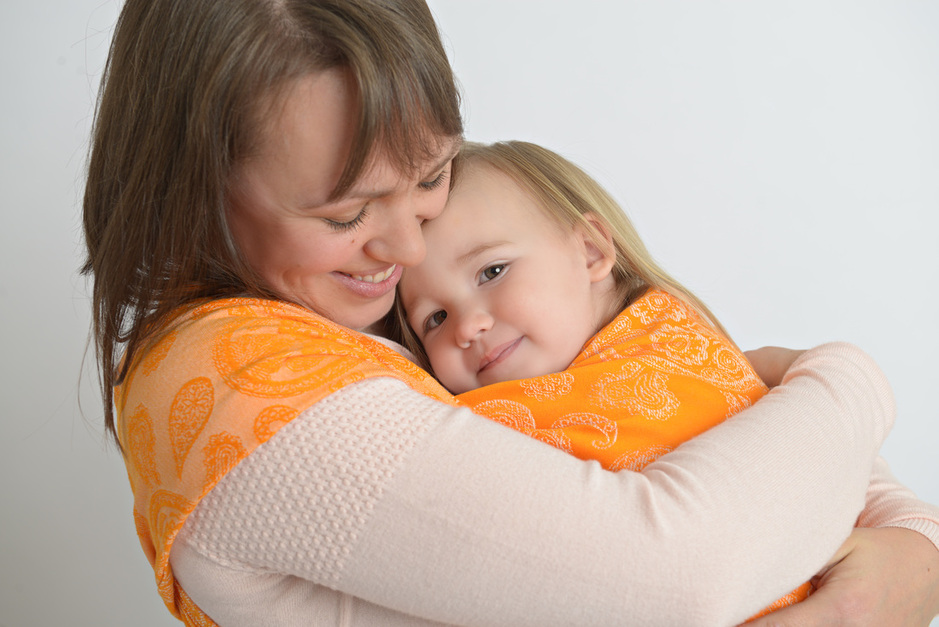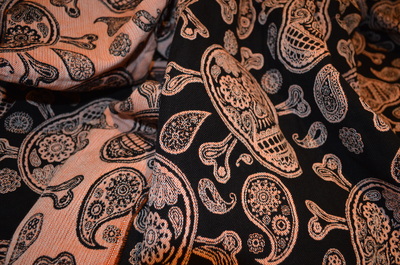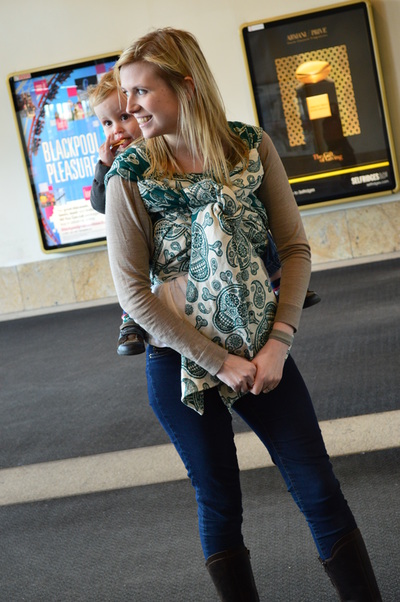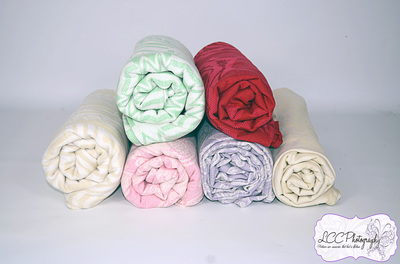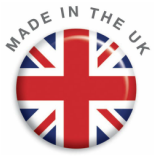As part of our commitment to producing high quality woven wraps that our customers will love, here is a description of some of the terms you might encounter on our website when it comes to grading and describing woven wraps.
We have introduced a grading system so that we can distinguish our wraps according to their aesthetics or cosmetic appearance. Please note that all our woven wraps irrespective of their grades are specifically woven for the purpose of baby or toddler wearing and they are manufactured with yarns compliant with the stringent UK/EU textile garment guidelines. The yarn quality, thread count, dyes, weaving structure, diagonal elasticity of the wraps are some of the qualities that are expertly engineered by our weavers so that all our wraps meet essential babywearing specifications and ultimately safety. Please scroll down for some short videos showing some aspects of our weaving process.
We have introduced a grading system so that we can distinguish our wraps according to their aesthetics or cosmetic appearance. Please note that all our woven wraps irrespective of their grades are specifically woven for the purpose of baby or toddler wearing and they are manufactured with yarns compliant with the stringent UK/EU textile garment guidelines. The yarn quality, thread count, dyes, weaving structure, diagonal elasticity of the wraps are some of the qualities that are expertly engineered by our weavers so that all our wraps meet essential babywearing specifications and ultimately safety. Please scroll down for some short videos showing some aspects of our weaving process.
 Grade A
Grade A
Hence, wraps that fall into our grade B or grade C are equally safe to be used as a carrying cloth. During the initial quality control procedures, any textiles found with rips, tears or holes are removed by our expert textile engineers. The second phase of our quality control is carried out after the hemming of the wraps to check that the wraps and hems are intact and to then grade them into these sections that we will explain here.
However, with weaving being an inexact science, some wraps are bound to have cosmetic issues like weavers knots, skips or floats and these only affect the appearance of the wraps from a close viewing distance. The nature of our durable jacquard weave means that all our grades of wraps are well structured and safe for use as a baby/toddler sling.
The following is a brief description of our woven wrap grades:
Grade A: Wraps in this category are approximately 95% cosmetically perfect meaning that the 5% flaws will only be weaver’s knots and these are part of the weaving process.
Some of our tri-weaves are woven with 3 sets of yarns and looking closely at them, one would think they have flaws but the yarn arrangements are simply part of the weaving process as well.
Examples of our tri-weaves are the SMP jewel and clematis, tango. You will find 3 sets of yarns when you look very closely at the weave structure ( See below). The quirky appearance of this weave shouldn't be mistaken for a weaving flaw.

Grade B: Wraps in this category will have approximately 35% weaving flaws like thread/yarn skips, floats or weaver's knots. These are purely cosmetic and they do not affect the integrity or safe use of your wrap. Our double weave for instance, floats will not loosen up or cause a hole to appear suddenly over any prolonged use. These wraps are capable of coping with daily wrapping and washing. Of course washing has to be done in accordance to the type of wrap blend you have.
Grade C: Wraps in this category are grade B wraps with cosmetic flaws higher than 35% occurrence across the length of the wrap. Our grade B and C wraps can also be called seconds quality wraps. Customers who own our seconds quality wraps have praised its wrapping qualities. We are proud to say that we pay a lot of attention to the way our wraps are woven because our weaving houses are very local to us here in the North of England and we work with some of the most skillful British weavers. Flaws are often tricky to avoid as they can be caused by a mere shift in the punch card in the case of our old double weave. Jacquard weaving is a complex process and not like printing designs on fabrics where you can easily predict the cosmetic appearance of your finished cloth.
Grade C: Wraps in this category are grade B wraps with cosmetic flaws higher than 35% occurrence across the length of the wrap. Our grade B and C wraps can also be called seconds quality wraps. Customers who own our seconds quality wraps have praised its wrapping qualities. We are proud to say that we pay a lot of attention to the way our wraps are woven because our weaving houses are very local to us here in the North of England and we work with some of the most skillful British weavers. Flaws are often tricky to avoid as they can be caused by a mere shift in the punch card in the case of our old double weave. Jacquard weaving is a complex process and not like printing designs on fabrics where you can easily predict the cosmetic appearance of your finished cloth.
Grade A wraps are woven on the same loom as grade B or C wraps, these cosmetic issues happen randomly and can't often be predicted until the weaving is completed.
In addition to the above grading system, it is also worth explaining some terminologies that you might encounter as well on our website:
Demo wraps: These are wraps that are brand new but they've been wrapped for very short periods only for the purpose of modelling for photos or demonstration wrap carries at events
Brand new wraps: These are wraps that have never been used, washed or used for demo. Depending on the type of weave, these wraps might reach you a little stiffer compared to wraps that have broken in by washing or daily use.
Loomstate: These are wraps that are freshly off the loom and haven’t been finished or steam treated
Scraps: These are off-cuts from our regular wraps. Some are fabrics that are left over after our tailors cut and hem our wraps
Finished wraps: These are wraps that have been steam treated. Steam treatment is a process whereby the wraps are passed through steam to further soften or add some special qualities like sheen to their structure/appearance
Original double weave: These are our old double weaves. We call them old because they were woven on a very old weaving loom and they feature a style of double weave that is very rare to find in the textile world. This is because our original double weave was woven using punch cards unlike nowadays, more modern weaving looms use computerized CAD systems. Punch cards are quite prone to weaving flaws but we believe that old forms of weaving should be preserved and appreciated. So whilst we have access to newer weaving styles like with our Noir, Aurantiaco, Marguerite and Rainbow SMP, we also endeavor to offer our customers a taste of the dying weaving art as a way to rejuvenate this almost extinct British weaving culture
Sateen double weave: This style of double weave is a new style of double weave that is significantly thinner in texture compared to our original double weave. This difference also stems from the type of loom that is used to achieve this weaving structures. The sateen double weave is woven on our modern sophisticated jacquard looms. The sateen double weave can be found in our new SMP rainbow and Soar High Eagle wraps. Read more here
Sateen weave: Our sateen weave can be found in our SMP noir, Aurantiaco, Marguerite , Luceo non uro sage green and forest. They are characterized by a beautiful silky sheen on their front side and then very textured embroidered odd side. More here
Plain weave: Example of this type of weave can be found in our Maxi-Roses woven wraps. Our maxi-roses have embossed twill effect weave in addition to the plan weave. So the large roses are very textured and the background of the wrap has a plain weave.
In addition to the above grading system, it is also worth explaining some terminologies that you might encounter as well on our website:
Demo wraps: These are wraps that are brand new but they've been wrapped for very short periods only for the purpose of modelling for photos or demonstration wrap carries at events
Brand new wraps: These are wraps that have never been used, washed or used for demo. Depending on the type of weave, these wraps might reach you a little stiffer compared to wraps that have broken in by washing or daily use.
Loomstate: These are wraps that are freshly off the loom and haven’t been finished or steam treated
Scraps: These are off-cuts from our regular wraps. Some are fabrics that are left over after our tailors cut and hem our wraps
Finished wraps: These are wraps that have been steam treated. Steam treatment is a process whereby the wraps are passed through steam to further soften or add some special qualities like sheen to their structure/appearance
Original double weave: These are our old double weaves. We call them old because they were woven on a very old weaving loom and they feature a style of double weave that is very rare to find in the textile world. This is because our original double weave was woven using punch cards unlike nowadays, more modern weaving looms use computerized CAD systems. Punch cards are quite prone to weaving flaws but we believe that old forms of weaving should be preserved and appreciated. So whilst we have access to newer weaving styles like with our Noir, Aurantiaco, Marguerite and Rainbow SMP, we also endeavor to offer our customers a taste of the dying weaving art as a way to rejuvenate this almost extinct British weaving culture
Sateen double weave: This style of double weave is a new style of double weave that is significantly thinner in texture compared to our original double weave. This difference also stems from the type of loom that is used to achieve this weaving structures. The sateen double weave is woven on our modern sophisticated jacquard looms. The sateen double weave can be found in our new SMP rainbow and Soar High Eagle wraps. Read more here
Sateen weave: Our sateen weave can be found in our SMP noir, Aurantiaco, Marguerite , Luceo non uro sage green and forest. They are characterized by a beautiful silky sheen on their front side and then very textured embroidered odd side. More here
Plain weave: Example of this type of weave can be found in our Maxi-Roses woven wraps. Our maxi-roses have embossed twill effect weave in addition to the plan weave. So the large roses are very textured and the background of the wrap has a plain weave.
Conclusively, whichever grade of Joy&Joe woven wrap you have, you can be rest assured of a superior wrapping quality, design and presentation. Woven fabrics are produced by the interlacing of warp (0°) fibres and weft (90°) fibres in a regular pattern or weave style. The fabric's integrity is maintained by the mechanical interlocking of the fibres. Drape (the ability of a fabric to conform to a complex surface), surface smoothness and stability of a fabric are controlled primarily by the weave style. This differs significantly from printed fabrics. You won't find weaver's knots or some of the terms we explained above in printed fabrics. Hence, we all need to take the complex process of jacquard weaving into account when expecting a 100% 'weaving-flaw' free fabric.
All our weaving houses are local to us here in the North of England and we ensure that we supervise the weaving and finishing and tailoring of our wrap fabrics. We wish you all many more sweet memories as you carry your little one in your Joy&Joe woven wraps.
|
|
|
|
|
|
|
|
|

